- No products in the cart.
May 27, 2020
Building SunnyVale $Farms Garden Project

In today’s world the cost of eating healthy food has continuously gone up. In truth, it is more affordable to eat food that is bad for you than food that is good for you. We started Seed2Need to be a leader in showing people that you can grow your own food, for a fraction of the cost of purchasing it in retail market. You do not need advanced machinery, chemicals, pesticides, or any of the industrial systems to begin. Simply all you need is a sunny place to let your garden grow and some seeds to sow. If you live in a city where land is limited, you can grow vegetables inside or any small space such as an balcony or small porch. You do not have to have acres of land to grow healthy food.
We started SunnyVale $Farms on land that we were not using and was also an area that got plenty of sunshine. In fact this area gets sun continuously from 10 am to 8 pm making it a prime spot for light loving produce.
Our biggest hurdles to planting a garden in the area we choose is that the land is very rocky and will have to be dug for the raised beds. Most of the rock around here is slate and can range from very small pieces to underground boulders.
Raised beds offer Growing Advantages
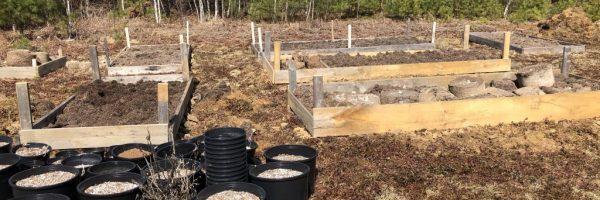
Raised garden beds (also called garden boxes) are great for growing small plots of veggies and flowers. They keep pathway weeds from your garden soil, prevent soil compaction, provide good drainage, and serve as a barrier to pests such as slugs and snails.
Doing the Ground Prep for the beds
The ground here is really rocky and not much grows in the area we put the garden. These rocks and soil were removed from under the beds. Each bed is about 14 inches deep. It was a lot of days of moving rocks, digging the ground, and removing debris.
Here are the different type of beds we built
Each bed we built is 14 inches deep, they are anywhere from 4×8 to 4×12 foot beds. Also the space is laid out so we can expand the garden very easy.
- (3) 4X12X14 inch deep beds
- (3) 4X8X14 inch deep beds
- (1) 2X4X14 inch deep bed.
How to build good soil for your garden bed
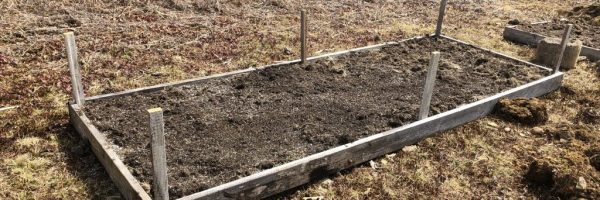
The very foundation of organic gardening is great soil, and truthfully creating good soil is something that takes time unless you are lucky enough to live somewhere with incredible topsoil already. In reality, It takes nature about 500 years to build up one inch of topsoil, and across the globe we loose about sixty million TONS of this precious resource every single day.
Make sure you start small, and utilize a French intensive method/square foot gardening method to maximize your harvest in a smaller space. This would mean less soil area to amend, and would conserve your financial and human resources.
Add soil amendments to improve structure and fertility; these could include bagged or homemade compost and composted manures, peat moss, and soil conditioner (pine bark fines). Raw manure is not normally added in spring. Many people suggest using peat moss as an inexpensive way to improve soil structure, so that you can reserve your compost for supplying nutrients.
Do not Buy Expensive Soil
Save your money for other soil amendments like compost. If you are container gardening then good potting soil is a great investment, and almost a must. I don’t recommend using regular garden soil in containers.
Try Natural Composting
Composting and compost use have numerous benefits in addition to green job creation and reducing the amount of waste destined for landfills and incinerators. At the same time we throw away tons of food scraps and yard trimmings, our soils are eroding and losing nutrients, while damaging receiving waters
Do not Over Water you Garden
New (and inexperienced) gardeners often want a timetable of when to water plants. The truth is that every plant is different. Different species of plants have different watering requirements.
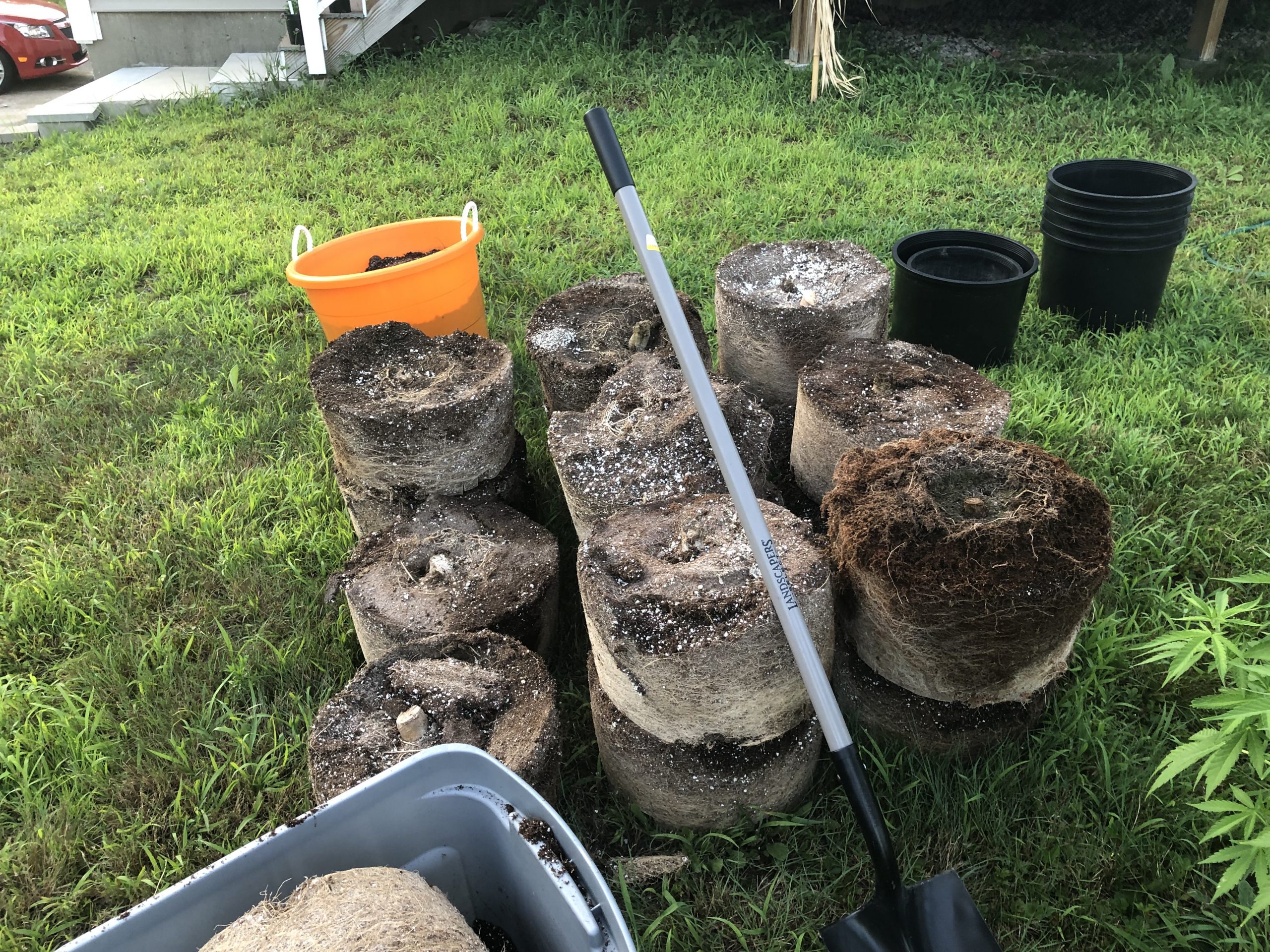
We used soil plugs to build our soil media
Good soil is one of the most expensive parts of putting in a raised bed system. Medical Cannabis Facility’s will sometimes get rid of the soil medium due to the labor cost of de-rooting the soil. We got a large amount that cost us nothing but time de-rooting. We broke down these “Plugs” into usable soil.
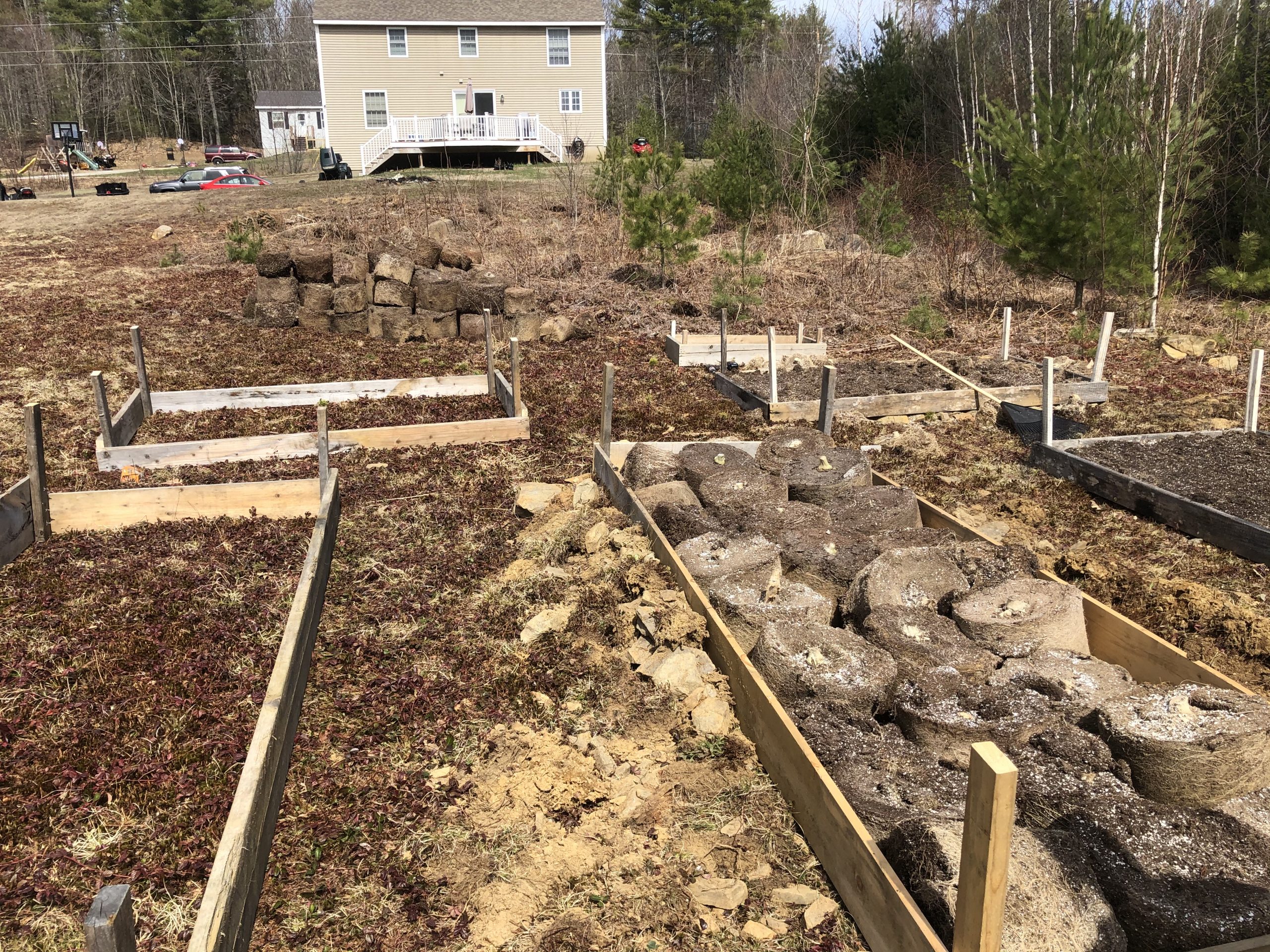
Make sure when laying out the beds you leave space
Make sure when you are building your garden beds to put plenty of space between them. You will be needing this to move between the beds, and it will help keep pests from moving from one bed to another. Also make sure you put your rows where your garden will receive plenty of light during the day.
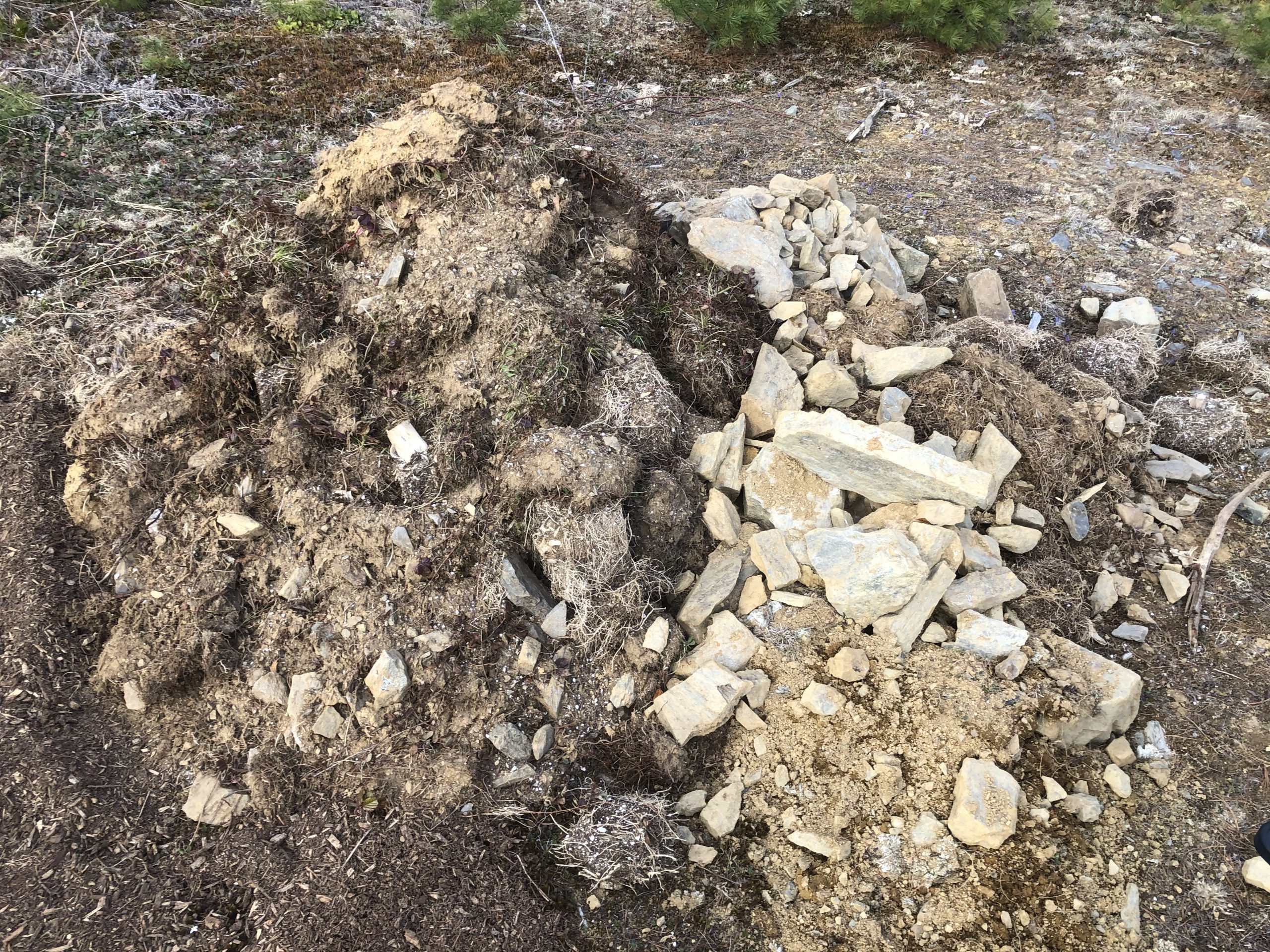
Material removed from below beds
We had excess soil and rocks that we removed from under the beds. Keeping this and mixing it back into the soil will help get trace materials back into the beds. Rocks can be used to create walls, garden structures, or ground up into trace materials.

Use Organic Mulch to cover any walkways
We covered the area between the beds with organic mulch. This was tree stumps that were ground down into a nice mulch. This helps shade the ground below and keeps the sun from drying the ground out. It will also reduce the amount of weeds and grass that will grow in the garden area.
Make sure you leave plenty of room for planing any Expansion Areas
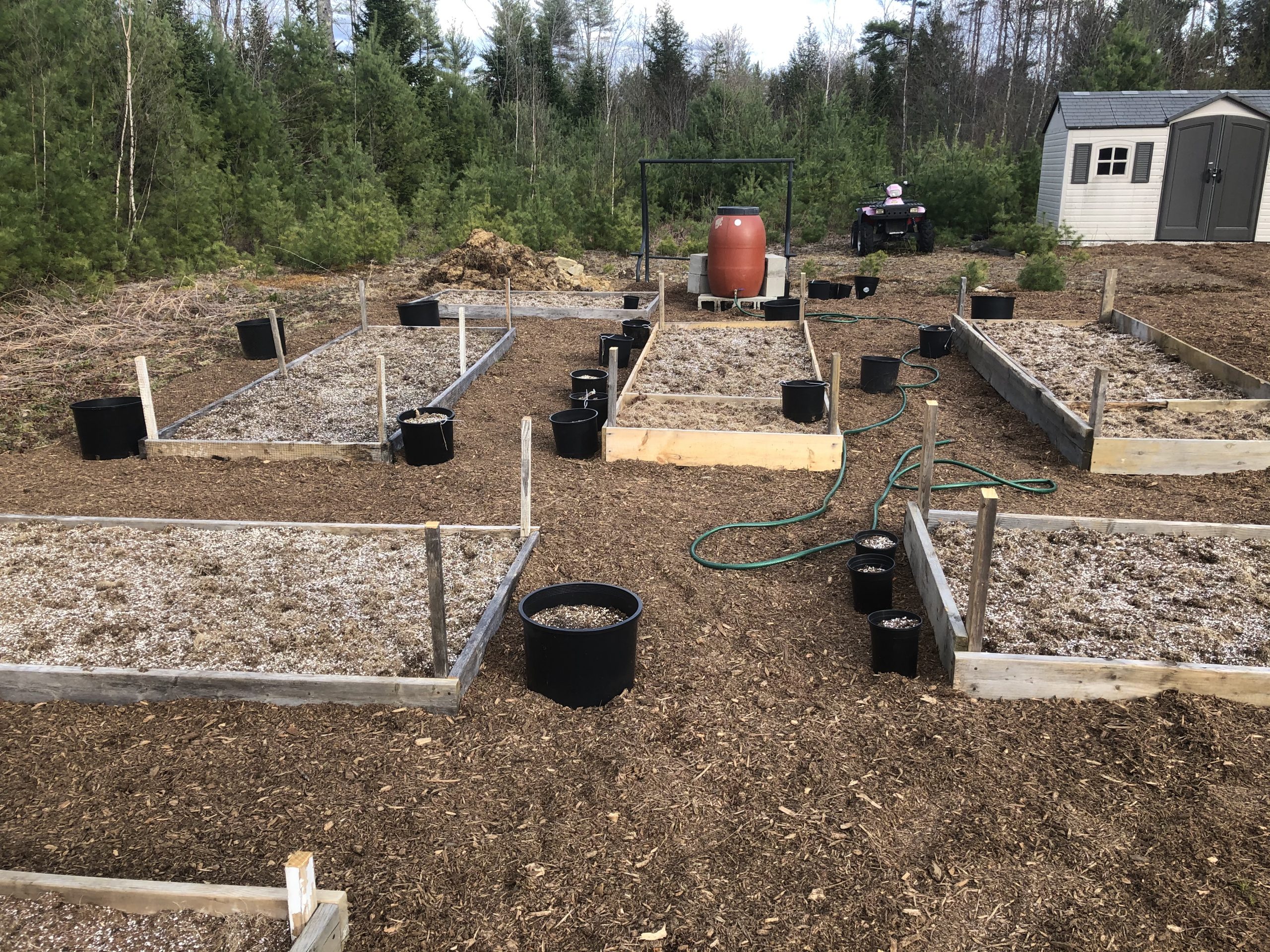
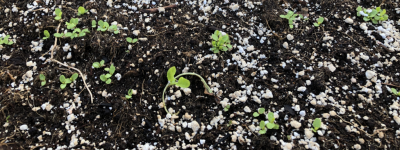
When planting, space plants apart so they are in rows. Make sure to leave plenty of space between them as some do not like to be planted in close proximity of another plant.
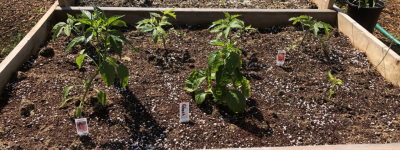
Some plants do better in other kinds of soil mixtures like coco-fiber core. Coco-Fiber helps retain moister and the fibers will allow for root growth.
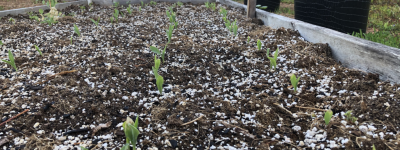
Some plants will mature early and other will take longer. With some kinds of plants you can get only 1 crop per year.
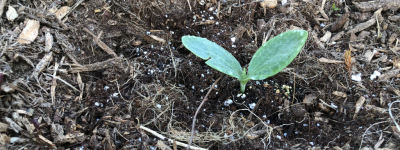
After planting it is good to cover the area around the plant to help keep the ground cool and moist.
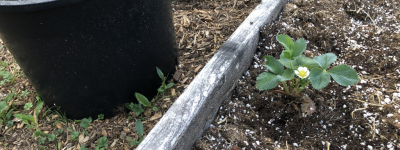
Find plants that have known benefits by planting it next to others. Each type of companion plant will offer pros’ and cons.
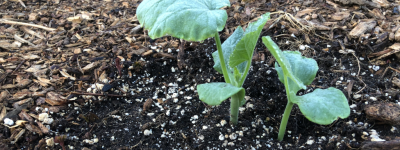
Some plants will be planted in the earth outside of the raised bed. These plants are mostly Vinny type plants that will need room to stretch out.
